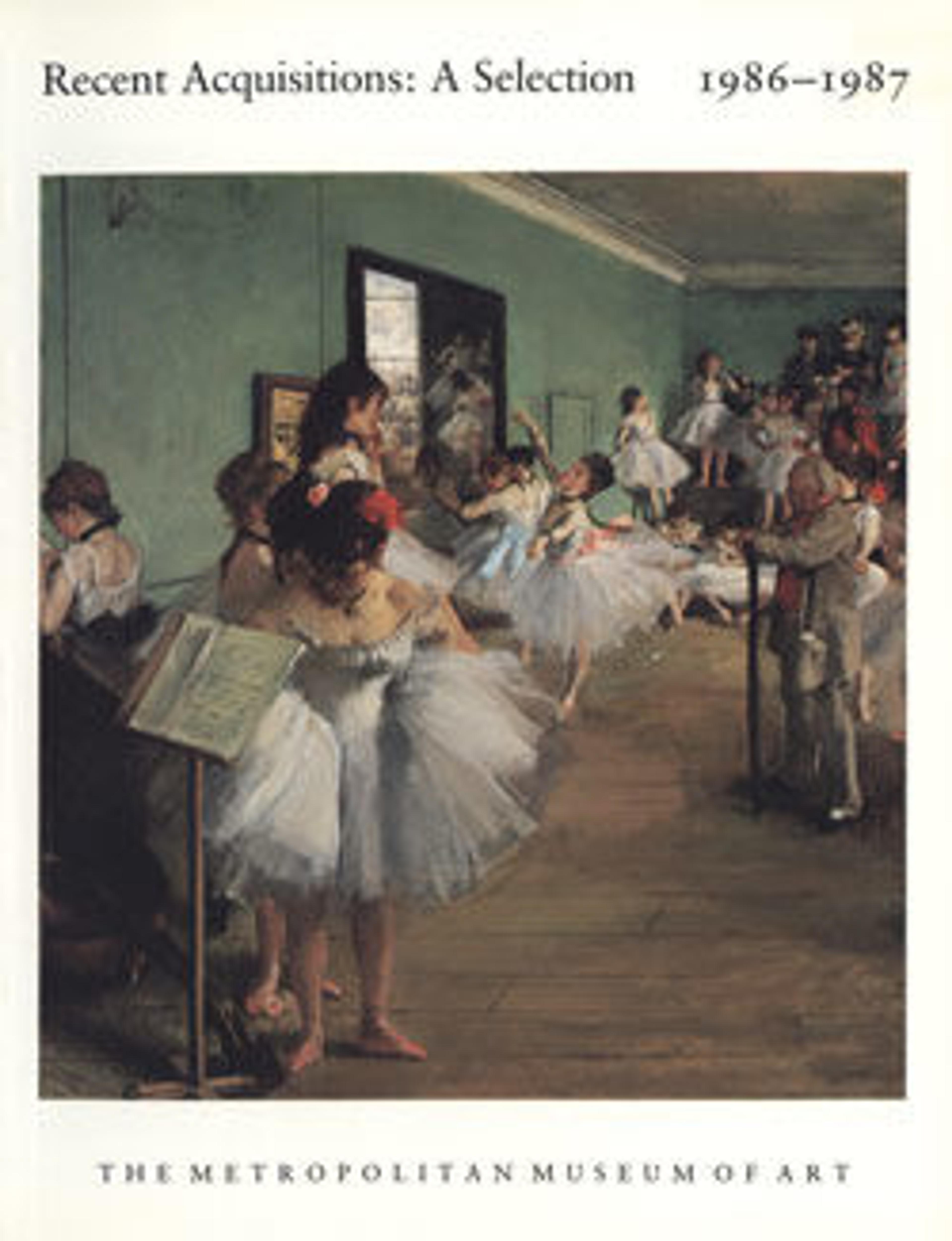Stationery Box in Kōdaiji style
The bold combination of naturalistic landscape designs and scattered paulownia crests on contrasting diagonal fields divided by a zigzag border is characteristic of a distinctive style of Momoyama-period lacquer decoration known as Kōdaiji, which was current from the 1580s through the early seventeenth century. The style is associated with the military potentate Toyotomi Hideyoshi (1536–1598) and named for the Kōdaiji temple, where his memorial shrine was built in 1616. The shrine's lacquered interior, along with some thirty lacquer objects of personal use that are preserved there, are similarly decorated with naturalistic designs, mainly of autumn grasses, which are often combined with scattered paulownia crests, the personal emblem of the Toyotomi family. On this box the landscape motifs of a snow-covered willow by a bridge and a wisteria-wrapped pine tree are unusual, as is the use of gold-and-silver-foil inlay.
Artwork Details
- Title: Stationery Box in Kōdaiji style
- Period: Momoyama period (1573–1615)
- Date: early 17th century
- Culture: Japan
- Medium: Gold- and silver-foil inlay, gold maki-e, on lacquered wood
- Dimensions: H. 8 1/4 in. (21 cm); W. 17 15/16 in. (45.6 cm)
- Classification: Lacquer
- Credit Line: Purchase, Lila Acheson Wallace Gift, 1987
- Object Number: 1987.82a, b
- Curatorial Department: Asian Art
More Artwork
Research Resources
The Met provides unparalleled resources for research and welcomes an international community of students and scholars. The Met's Open Access API is where creators and researchers can connect to the The Met collection. Open Access data and public domain images are available for unrestricted commercial and noncommercial use without permission or fee.
To request images under copyright and other restrictions, please use this Image Request form.
Feedback
We continue to research and examine historical and cultural context for objects in The Met collection. If you have comments or questions about this object record, please contact us using the form below. The Museum looks forward to receiving your comments.
